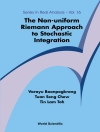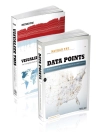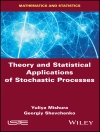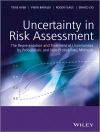All the data was out there to warn us of this impending attack, why didn’t we see it?’ This was a frequently asked question in the weeks and months after the terrorist attacks on the World Trade Center and the Pentagon on September 11, 2001. In the wake of the attacks, statisticians moved quickly to become part of the national response to the global war on terror. This book is an overview of the emerging research program at the intersection of national security and statistical sciences. A wide range of talented researchers address issues in
– Syndromic Surveillance—How do we detect and recognize bioterrorist events?
– Modeling and Simulation—How do we better understand and explain complex processes so that decision makers can take the best course of action?
– Biometric Authentication—How do we pick the terrorist out of the crowd of faces or better match the passport to the traveler?
– Game Theory—How do we understand the rules that terrorists are playing by?
This book includes technical treatments of statistical issues that will be of use to quantitative researchers as well as more general examinations of quantitative approaches to counterterrorism that will be accessible to decision makers with stronger policy backgrounds.
Dr. Alyson G. Wilson is a statistician and the technical lead for Do D programs in the Statistical Sciences Group at Los Alamos National Laboratory. Dr. Gregory D. Wilson is a rhetorician and ethnographer in the Statistical Sciences Group at Los Alamos National Laboratory. Dr. David H. Olwell is chair of the Department of Systems Engineering at the Naval Postgraduate School in Monterey, California.
Table des matières
Game Theory.- Game Theory in an Age of Terrorism: How Can Statisticians Contribute?.- Combining Game Theory and Risk Analysis in Counterterrorism: A Smallpox Example.- Game-Theoretic and Reliability Methods in Counterterrorism and Security.- Biometric Authentication.- Biometric Authentication.- Towards Statistically Rigorous Biometric Authentication Using Facial Images.- Recognition Problem of Biometrics: Nonparametric Dependence Measures and Aggregated Algorithms.- Syndromic Surveillance.- Data Analysis Research Issues and Emerging Public Health Biosurveillance Directions.- Current and Potential Statistical Methods for Monitoring Multiple Data Streams for Biosurveillance.- Evaluating Statistical Methods for Syndromic Surveillance.- A Spatiotemporal Analysis of Syndromic Data for Biosurveillance.- Modeling.- Modeling and Simulation for Defense and National Security.- Modeling and Parameterization for a Smallpox Simulation Study.- Approaches to Modeling the Concentration Field for Adaptive Sampling of Contaminants during Site Decontamination.- Secure Statistical Analysis of Distributed Databases.- Statistical Evaluation of the Impact of Background Suppression on the Sensitivity of Passive Radiation Detectors.












